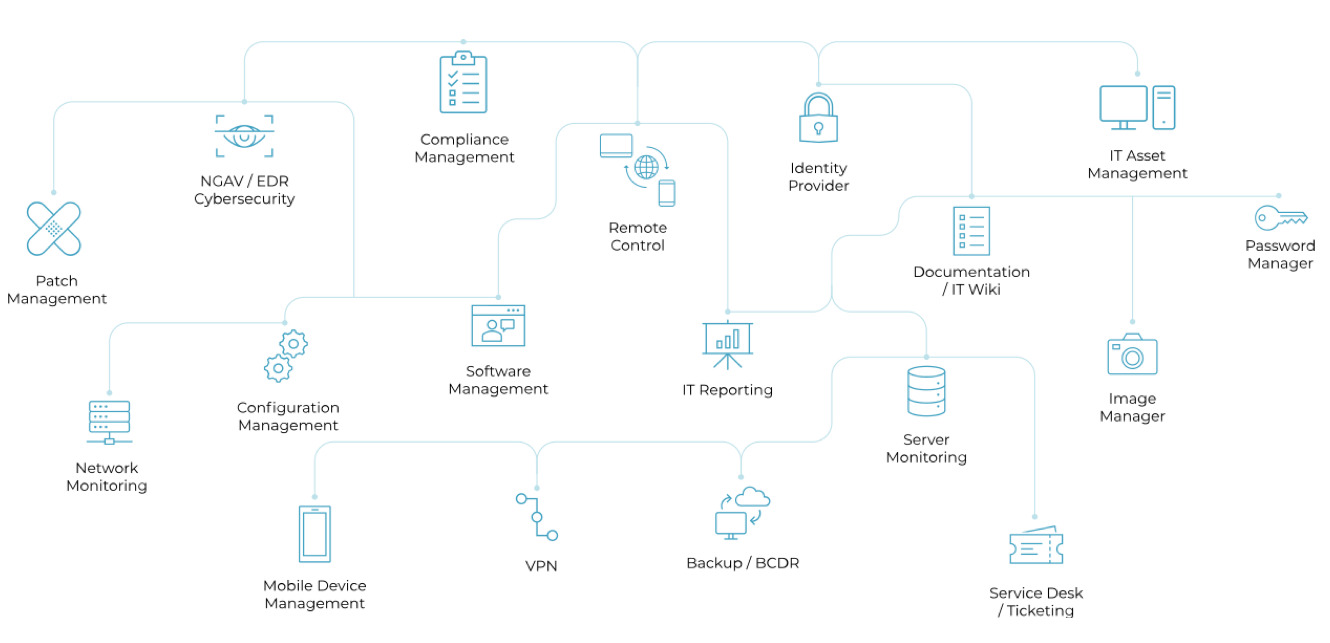By Andre Schindler, General manager of EMEA for NinjaOne
The past two-and-a-half years have ushered in an accelerated era of digital transformation, but now economic tides are once again shifting and budgets are tightening. The organizations best positioned to maintain their momentum will be the ones that refocus digital transformation efforts back onto the department that has been primarily responsible for delivering its benefits to other business functions — IT.
The pandemic has had an undeniably massive impact on business operations, catapulting a host of digital transformation projects to the top of budget needs and priorities. Driving cloud adoption, facilitating secure remote work and access — for many organizations these kinds of initiatives may have been born out of urgent, short-term necessity, but it’s clear they now view these projects as critical keys to unlocking long-term benefits and growth.
New data from PWC shows that 60% of senior executives believe digital transformation will be their most critical driver of business growth in the coming year. Research group IDG forecasts investments in digital transformation will reach $2.8 trillion by 2025, more than double the amount allocated in 2020.
In short, the majority of businesses aren’t viewing their digital transformation efforts as short-term checkboxes. They’re just getting started. Talk turning to a possible recession only makes the promised advantages of digital transformation — improved efficiency, greater flexibility, enhanced security, reduced costs — even more appealing.
There’s just one problem. The appetite for digital transformation may be growing, but the capabilities and technical talent needed to manage those initiatives is limited, and in many cases, already stretched entirely too thin.
The cobbler’s children have no shoes: Enterprise IT’s growing burden and deficiency
The pandemic has put immeasurable strains on all departments, but IT in particular has borne the brunt of putting digital transformation into action. The transition to enabling remote work was itself a heavy lift, and now the expectation is increasingly that IT should be supporting not only in-office networks and remote employees, but a hybrid combination of them both. All while balancing the need for accessibility to critical systems and data with the equally important need to maintain security and compliance.
As a result, IT’s role, tasks, and workflows have become increasingly complex, as have their tool stacks. With more disparate systems and workflows to manage than ever, many IT teams haven’t had the bandwidth or time to apply digital transformation efforts to their own technology and processes. While they’ve transitioned productivity suites and end-user applications to cloud-based SaaS models that support modern work requirements, for example, their own tools have lagged behind, requiring on-premises, network- or domain-based models to deliver services.

In addition, the sheer number of tools IT teams have adopted to support hybrid environments and evolving employee needs has put a significant strain on productivity and efficiency. More tools means more training and more monitoring time needed. More dashboards means more time lost to context switching as well as pulling and reconciling data from multiple sources.

Finally, many IT teams continue to be bogged down with basic, repetitive tasks that could and should be automated. From employee onboarding and offboarding to installing patches and updates to issuing password resets, managing and monitoring backups, and more.
This is the type of work that IT helps other departments to identify, streamline, and automate. If organizations want to continue scaling digital transformation efforts while facing economic headwinds, it’s time that effort was applied to IT, itself.
4 ways organizations can continue accelerating digital transformation during a downturn (without burning out IT)
The solution that we’re seeing more forward-thinking and mature organizations adopt is a more unified approach to IT management. Unlike traditional approaches, the focus is placed squarely on empowering IT teams with centralized and remote management capabilities purpose-built to drive efficiency and productivity across today’s hybrid, remote, and distributed workforces.
Here are four tenets of unified IT operations that we see these organizations embracing:
- Centralize and consolidate IT management: On average, today’s IT teams use 20+ tools to manage, secure, and support end users and their endpoints. The amount of time lost to logging in, navigating, and context switching between all those tools is substantial, to say nothing of the training time required for new hires to get up to speed on them all. In addition, integrations and data-sharing between tools is often limited, at best. Consolidating point solutions into a unified IT management platform can drive radical efficiency improvements, open up a world of multi-step automation possibilities, and improve reporting by providing a single source of truth.
- Make automation part of the organization’s DNA: As with other departments, much of the most time-consuming work that bogs down IT is made up of standardized, repetitive tasks that are ripe for automation. Introducing automation across key workflows and endpoint management tasks is key to scaling operations, improving reliability, and freeing staff up to engage in projects that have more strategic value.
- Align behind modern workflows: The way people work and businesses organize themselves is changing and becoming more distributed. In many cases, remote and hybrid work is here to stay. Organizations need to empower IT leaders to align their own departments behind these norms, ensuring IT management tools and processes fully and natively support distributed endpoints and users.
- Break the perception that IT is a pure cost center: The pandemic has made clear that IT is an enabler of business and needs to be recognized as a strategic contributor. Adopting unified IT operations and management allows IT teams to lean into that role by decreasing the time needed for menial tasks and reactive fire-fighting and allowing them to shift more bandwidth to ensuring their goals and processes are aligned with broader business objectives. By demonstrating the ability to deliver better business outcomes along with improved employee productivity and satisfaction, IT stands a much better chance of securing the resources, influence, and buy-in to make an impact.
Moving forward, organizations need to ensure that they are positioning their IT departments to continue driving digital transformation — and the improvements to productivity, efficiency, and employee satisfaction it provides — at scale. That is true in the best of circumstances, but especially with economic turbulence gathering strength. To accomplish that in any kind of sustainable, cost-effective way, however, organizations need to empower IT to modernize its own toolset and workflows, first.
About the Author

Andre Schindler is General manager of EMEA for NinjaOne. A veteran of the IT software industry, he has deep experience in sales, strategic partnerships, and building and scaling international teams.



































